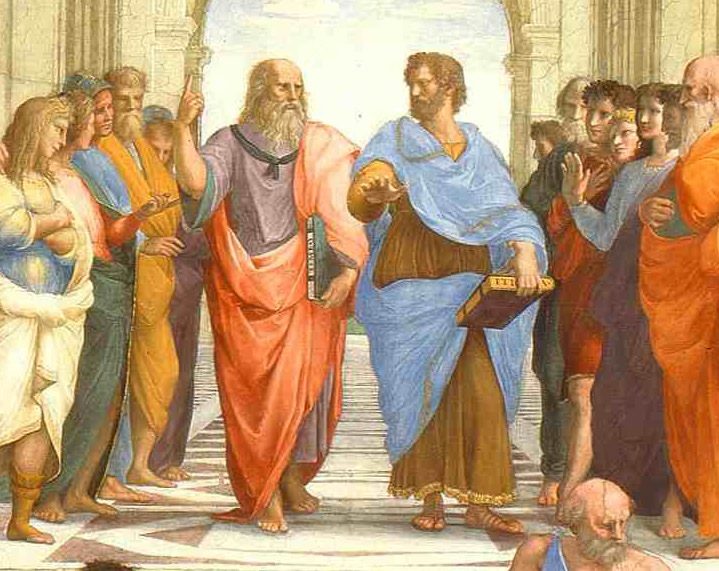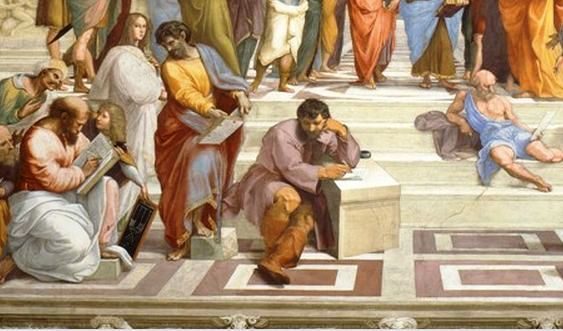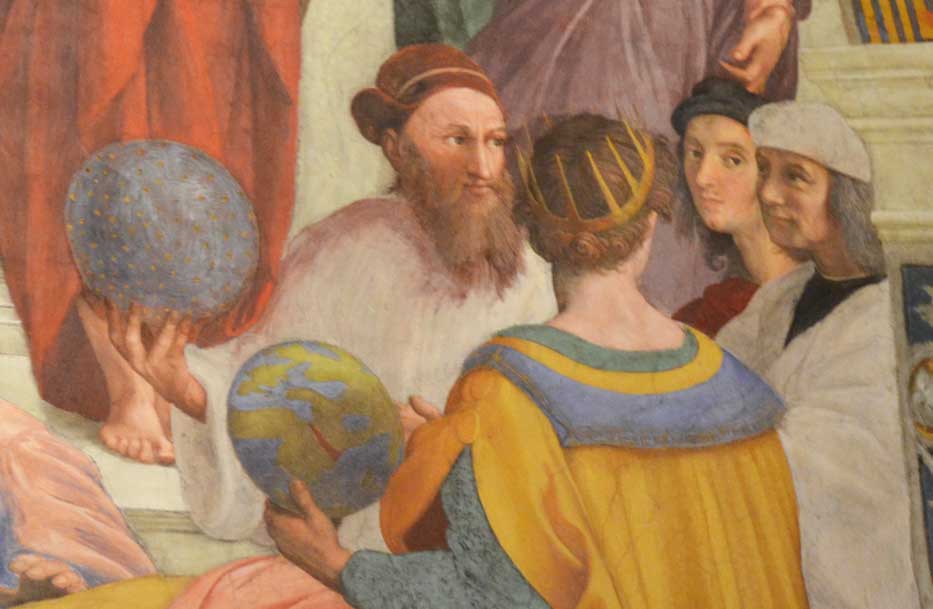In "the school of Athens", the famous fresco painted by Raphael, located in the Stanza della Segnatura, now the Vatican Museums, there are many characters who represent, in disguise, the Rome of the early sixteenth century. 
One of these is Angelo Colocci, originally from Jesi, belonging to one of the most important patrician families of the small city in the Marche region.
He moved to Rome at a very young age and held pontifical positions of considerable importance, this allowed him, in addition to a certain economic availability, to be in contact with illustrious personalities of the time who gravitated around Pope Julius II. In the meantime Colocci, a passionate humanist, takes the opportunity to take the reins of the renowned Roman Academy founded by Pomponio Leto and in his villa near the Horti Sallustiani, welcomes all the intelligentsia of the time, thanks to a library that he obsessively curates, rich of ancient documents and manuscripts, which attracts personalities of the caliber of Andrea Fulvio, the kabbalist Egidio da Viterbo, Pietro Bembo and Baldesar Castiglione, to name a few.

The air is still thick with Greekness, the spirit of Cardinal Bessarion hovers in the minds of artists in search of fame and in the souls of those who see in Plato and Pythagoras, in the study of astrology and the cosmos, in numerology and in transmission of a knowledge that descends from the Greeks and even further back, in Zoroaster and the Kabbalah, in the Avesta and in the myths of the Egyptians, something that has always linked East and West, but which was dramatically interrupted by the capture of Constantinople, the second Rome , by the Ottomans in 1453, and which forced many to diaspora, the flight of emperors and prelates, as well as entire families of Greek lineage to seek refuge in Venice or Rome, taking with them few but precious things: relics of saints or ancient manuscripts that find shelter in the libraries of the Montefeltro in Urbino and the Malatesta in Cesena, or will be deposited awaiting the construction of new ones, such as the Marciana in Venice to which Bessarion will entrust his entire priceless collection.
This spill, this transmission of partly unpublished and unknown texts in Italy will give rise to a cultural "renaissance" which has no equal in any other era and which will stimulate the arts and sciences for a very long time, more than a hundred years, and of which Rome it is partly an actress but also a container, in the sense of containing/holding, because the Greek texts stimulate Hellenism, or paganism, which is the number one enemy of the Catholic Church. (Previously, Pomponio Leto's academics were arrested with the accused of conspiring against the Pope)
But Colocci manages well in Rome, he is in contact with Bramante who is already working on the new urban planning of Via della Lungara together with the Chigis, he buys land on the advice of the Sienese banker, he is truly a figure immersed in the planning of everything, whether palaces or frescoes, debates or studies. Maybe that's why he also tries to write a treatise on his greatest passion: numbers, but he will never be able to finish it.
Giorgio Mangani, publisher in Ancona and historian of geographical thought, delves into the figure of this aristocrat from Jesi, a passionate scholar but reserved like most courtiers, arriving at the discovery of a detail of no small importance: it is he, Angelo Colocci, the man who holds the cosmos in Raphael's famous painting, "The School of Athens" located in the Stanza della Segnatura in the Vatican - among other things one of the most visited museum sites in the world - while conversing with a Ptolemy from behind who holds the terrestrial globe in his hand . Until now, Strabo or Zoroaster had always been referred to. He was from the Marche region, like Bramante and Raphael.

A sense of belonging to a community captures us at times, a further confirmation towards a region that makes discretion its lifestyle and which has nevertheless always provided a valid contribution to the construction of the cultural history of our country.
Angelo Colocci is represented by Raphael as he must have provided the design bases for the construction of the painting itself, the great artist, then twenty-seven years old, still needed the help of experts that perhaps the Jesi native provided him through his Academy, like the already cited Andrea Fulvio, antiquity and numismatist, or Tommaso Fedra Inghirami (He is Epicurus in the painting) expert in theatrical scenography, to whom we perhaps owe that sense of the perspective movement of the two great philosophers in the central scheme, namely Plato (with Leonardo's face) and Aristotle (i.e. Bastiano da Sangallo known as the Aristotle) and the subdivision of the characters from left to right between arithmeticians and geometricians, managing to immerse us in the society of that time which is timeless at the same time and poses us questions, political and philosophical, which are still valid today.
Perhaps today above all else.
Giorgio Mangani: “The beauty of number” – Editorial work, 2018.
